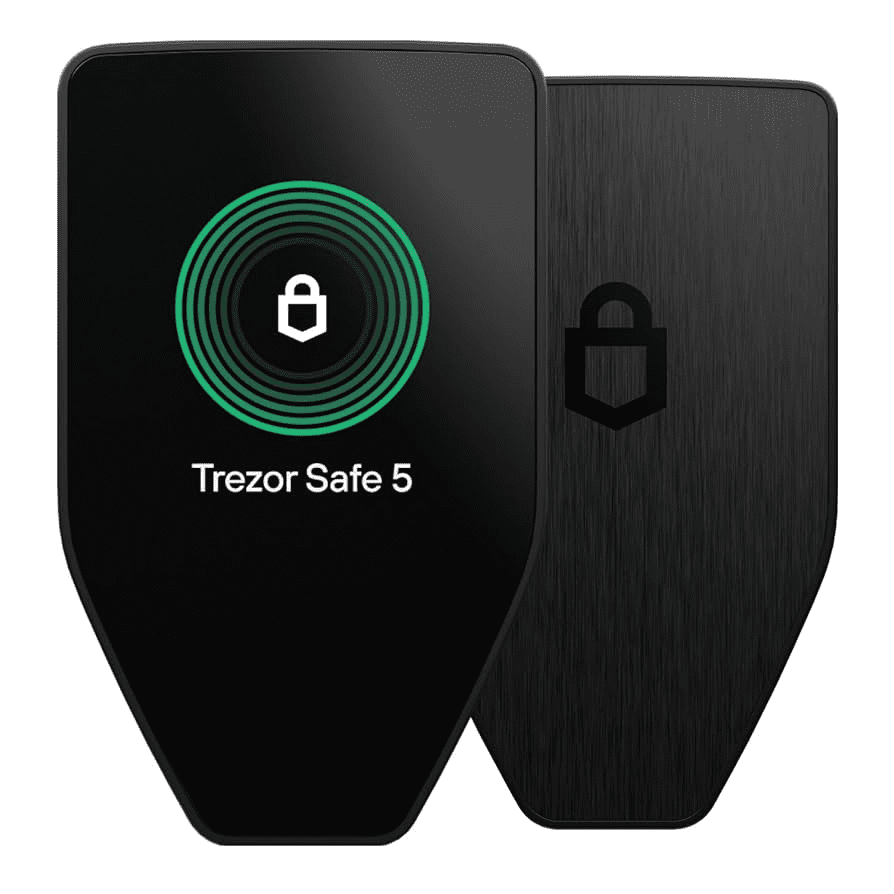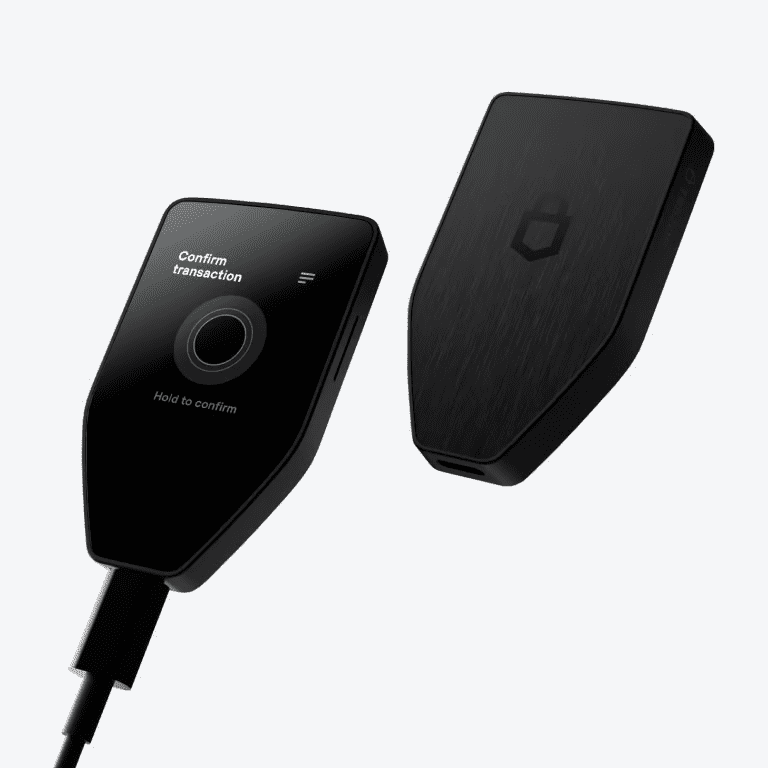In this article, I will dissect Ledger vs. Trezor: Investor’s Guide by highlighting the main differences between the top two hardware wallets.
I will cover the differences in security, ease of use, cost, and how backups are created so the investor can decide based on well-researched data.
No matter if you value strong security, openness, or simplicity, this guide will help you determine which wallet meets your cryptocurrency requirements.
What Is Ledger?
Ledger is one of the best hardware wallet providers designed to keep cryptocurrency stored safely offline. It protects your private keys with Secure Element (SE) technology so corrupted devices can’t access them.
Ledger has a range of devices to choose from (Nano S Plus, Nano X, and Stax), depending on what you need.

Ledger Live is the companion app that lets you manage, stake your coins, and access DeFi and NFTs of more than 5,500 crypto assets.
Ledger builds and maintains security and ease of use so that both novice and seasoned crypto investors can access their wallet and the app with confidence.
What Is Trezor?
Trezor was the first hardware wallet created and is meant to offer safe and offline storage for your cryptocurrency.
Trezor uses open-source software, which is different from closed-source software because closed-source software only allows the developers or the company to access the code.

With open-source software, the community can examine and critique the code. Trezor supports many digital assets and has improved features such as the Shamir Backup.
Models like the Trezor Model One, Model T, and Safe five cater to different levels of investor needs, offering simplicity, great protection, and trust for cryptocurrency management.
Comparative Overview
| Feature | Ledger | Trezor |
|---|---|---|
| Secure Element Chip | Yes (CC EAL5+) | Yes (EAL6+ in Safe 5) |
| Open-Source Firmware | Partially (Ledger Live is open-source) | Fully open-source |
| Bluetooth Support | Yes (Nano X, Stax) | No |
| Shamir Backup | No | Yes (Model T, Safe 5) |
| Recovery Seed Protection | Standard 24-word phrase | Standard 24-word phrase or Shamir Backup |
Which Wallet Offers Better Security?

Ledger Security
Ledger wallets use Secure Element chip (CC EAL5+) to shield private keys against physical attacks. It is very hard to tamper with this form of fortified security. While partially closed-source, Ledger’s firmware transparency is limited to avoid unauthorized access.
Trezor Security
Trezor provides open-source firmware, complete with auditability and community confidence. While lacking a Secure Element, Trezor mitigates this with features like Shamir Backup and passphrase protection. Trezor also enhances privacy with Tor and coin control features.
Which Wallet Is Easier to Use?
User experience is important when assessing hardware wallets, especially for those just starting with cryptocurrency. Ledger and Trezor have different designs and features, meeting different user needs and preferences.
Ledger: Streamlined and Feature-Rich
Ledger’s user experience is centered around the proprietary Ledger Live desktop and mobile application.
Ledger Live functions as a one-stop shop application, and users can manage 5,500+ cryptocurrencies, stake assets, and access dApps without third-party services. Ledger Live is feature-rich, and the user interface is crafted to be simple with seamless navigation.
Bluetooth-enabled Ledger Nano X and Ledger Stax models are designed to help users manage crypto wallets and perform transactions on the go with larger screens.
The Ledger Stax features a large greyscale touchscreen, and users can see more information on the screen, enhancing the experience.
Trezor: Transparent and Community-Driven
Trezor offers open-source firmware giving customers the ability to observe and review the code, fostering transparency.
While Trezor Suite desktop application functions as a simple asset management platform, staking and NFT management, along with some advanced features, are offered through complex third-party integrations. For users who expect an integrated suite, this can be frustrating.
The Trezor Model T and Trezor Safe 5 have color touchscreens that help with quick and easy navigation.
Still, as the touchscreen improves the devices, some users find the need to have integrated software for most features, instead of the need for external software, to be frustrating.
Which Wallet is More Secure?

When it comes to security, Ledger and Trezor, which are two of the top hardware wallets, take different approaches.
Ledger emphasizes hardware security, incorporating a Secure Element (SE) chip which keeps the private keys encased within a protective hardware barrier that makes the keys invulnerable to physical and cyber threats.
On the other hand, Trezor prioritizes transparency and trust. It is known for fully open-source firmware that the community can audit and for backup security.
It incorporates Shamir Backup, which divides recovery phrases into shares to mitigate loss or theft.
What Are the Pros and Cons of Each? Ledger VS Trezor
| Pros | Cons |
|---|---|
| High Security: Uses a Secure Element (SE) chip with EAL5+ certification to protect private keys from physical and digital threats. | Closed-Source Firmware: The Ledger Live OS is partially closed-source, which may concern users who prioritize transparency. |
| Wide Cryptocurrency Support: Supports over 5,500 cryptocurrencies, including Bitcoin, Ethereum, and various altcoins. | Bluetooth Vulnerability Concerns: Some users worry about potential risks with wireless connectivity on Nano X and Stax models, though private keys remain secure. |
| Ledger Live App: User-friendly interface for managing assets, staking, DeFi, and NFTs. | Limited Advanced Backup Options: Unlike Trezor’s Shamir Backup, Ledger primarily uses a standard 24-word recovery phrase. |
| Mobile & Desktop Compatibility: Works with iOS, Android, and desktop platforms, offering flexibility. | Higher Cost for Premium Models: Devices like Nano X and Stax are more expensive than basic alternatives. |
| Regular Firmware Updates: Continually improving security and adding new features. | Learning Curve for Beginners: Some new users may find initial setup and firmware updates slightly complex. |
Conclsuion
In conclusion, both Ledger and Trezor offer strong security for cryptocurrency users, each with different benefits.
Ledger stands out for its hardware protection and added features, while Trezor shines for its transparency, open-source firmware, and Shamir Backup.
Choosing between them will come down to whether you value added features and convenience more or transparency and modular/customizable security options.
FAQ
Ledger’s Ledger Live app provides an integrated interface; Trezor requires external apps for some features.
Ledger supports iOS and Android; Trezor primarily works on desktop with limited mobile support.
Ledger uses a 24-word recovery phrase; Trezor offers 24-word or Shamir Backup for extra security.
Ledger Nano X and Stax, and Trezor Model T and Safe 5, have touchscreen options.
Trezor is fully open-source; Ledger’s firmware is partially closed-source.













Got a Questions?
Find us on Socials or Contact us and we’ll get back to you as soon as possible.